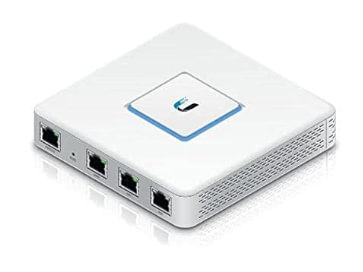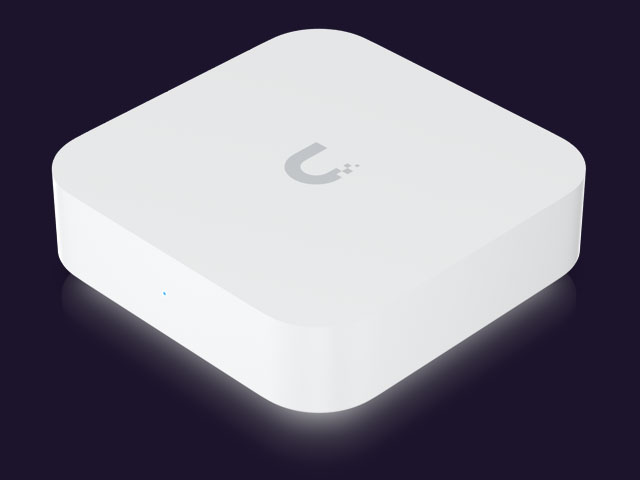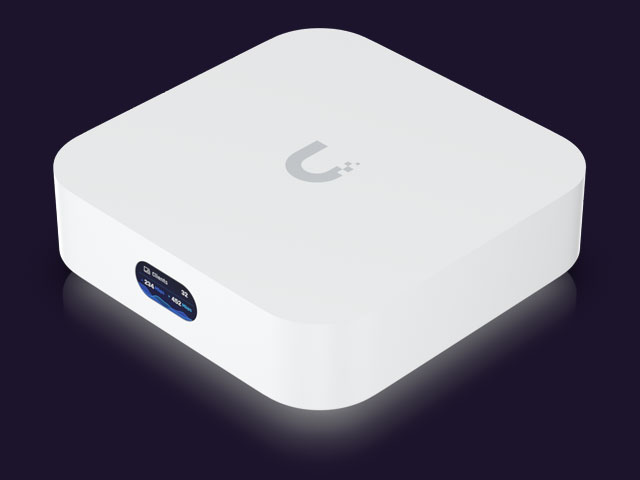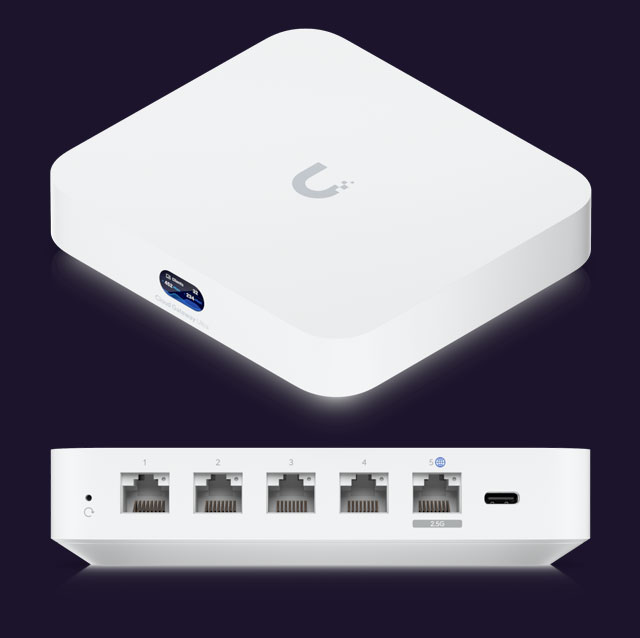My introduction to Unifi
In 2019, I faced a new challenge with my home network - Three international students! Suddenly we had to share the internet with teenagers and plethora of new connected devices.
Setting up a Guest Network
My old NetGear Nighthawk Wifi Router wasn’t really up for the task of handling lots of untrusted devices all trying to access the internet.
After talking to the infrastructure guys at work, they suggested I setup my own router firewall using pfSense, this way I could establish firewall rules and a separate Guest network. Long story short - I bought a mini nuc style pc from AliExpress (not recommended) and got burnt by it’s poor performance (it would crash during my burn-in testing).
When discussing this with another guy from IT, he recommended I checkout Unifi.
So I never got around to setting up a very custom pfSense box and soon stepped into the world of pro-consumer network gear.
The USG
The first bit of Unifi kit I bought was the USG (Unifi Security Gateway).

Which at the time I got from Amazon for only $179.00 AUD.
From there, I quickly realised that I needed more gear:
- Unifi Cloud Key ($129.00 AUD)
- Unifi Nano HD ($279.00 AUD)
- NetGear 4 port Network Switch (~$80)
Coupled with the VDSL2 Modem for my copper to the node internet connection, I had a whole lot of stuff sprawled above my kitchen cabinets!

2019 - 2023
I can’t say I had any major complaints with the Unifi Gear. It basically ‘just worked’. I could easily assign new devices from my international students automatically to the guest network (they were often buying new things).
The guest network ensured that the devices couldn’t talk to each other (network and device isolation) and they couldn’t download more than a set threshold, which ensured that I could still stream tv at night. It also had easy to govern rules around the guest network active periods (curfew at 11pm).
On the odd occasion, I would have to stand on a kitchen chair and restart something, or troubleshoot why the internet was down. Noting all of the accumulated dust I would consider a better long terms solution.
Running out of support
In the past 6 months or so I started to notice that the Cloud Key was no longer getting updates. Various posts on the Ubiquiti forum would question if the devices had reached end of life.
Similar questions were being raised around the USG gateway as well.
I believe that officially the USG-3g is still in support and has not officially reached end of life.
Time for an Upgrade?
In early 2024, I began a review of my upgrade choices and around the same time Unifi introduced two new attractive replacement options.
The Unifi UXG-Lite and the USG-Express
Both of these products offered interesting features.
UXG-Lite
The UXG-Lite was hailed as the direct USG successor with some very welcome performance upgrades (10 x for IPS/IDS). Just like the earlier USG it still required a cloud key for management.
The intended audience for this device seemed to be existing USG users who didn’t want to buy the more expensive Unifi gear (USG-Pro-4 costs ~500 AUD and is designed for a rack mount).

| Feature | Description |
|---|---|
| Routing performance | Up to 10x routing performance increase over USG. |
| Security features | Application-aware firewall rules, signature-based IPS/IDS threat detection, content, country, domain, and ad filtering |
| IDS/IPS | It can route traffic with speeds up to 1 Gbps with intrusion detection and prevention systems turned on. |
| UniFi Network App | This device still requires a Cloud Key or the Unifi Network Application to be running externally to manage the Unifi devices. |
| CPU | Dual-core ARM Cortex-A53 at 1.0 GHz |
| Memory | 1.0 GB DDR3 |
| Power Consumption | 3.83W Max |
| Internal Storage | Unknown |
| Price | $309.00 AUD |
USG-Express
The USG-Express presented a different path altogether, no need for a cloud key to manage it, no need for a separate Wifi Access point, but a limited set of firewall options (No IPS/IDS) and a limited number of Unifi devices it could manage.
The intended audience for this device seems to be aimed squarely at relatives of existing Unifi enthusiasts! I wouldn’t hesitate to recommend this to my sister or mother-in-law.

| Feature | Description |
|---|---|
| Built-in WiFi 6 | It supports the WiFi 6 standard and can cover up to 1500 square feet with a single unit. It can also connect to more than 60 WiFi devices. |
| UniFi Network App | It runs the UniFi Network app natively, which allows you to manage your entire network from one place. You can configure firewall, VPN, VLAN, authentication and more. |
| Plug-and-play | It has a sleek and compact design that can power an entire network or simply mesh as an access point. It has one WAN port and one LAN port to extend your network. |
| Status display | The small display on the front shows system stats and network information. |
| Mesh Network | Multiple USG-Express devices can be joined together as a mesh network. |
| Stand alone | No need for any other devices, just add internet. |
| CPU | Dual-core ARM Cortex-A53 at 1.0 GHz |
| Memory | 1.0 GB DDR3 |
| Power Consumption | 10W Max |
| Internal Storage | 10 GB |
| Price | $269.00 AUD |
Cloud Gateway Ultra (USG-Ultra)
After some procrastination, I was on the verge of ordering the UXG-Lite (~300 AUD) when an entirely new device from Unifi was vaguely announced.

This new device, the USG-Ultra, is quite baffling given the just announced UXG-Lite.
- The Ultra is only a little bit more expensive (~$15 AUD).
- The Ultra has significantly more powerful specs.
- The Ultra also adds 4 LAN 1GbE ports.
- It also seems to be more prominent on the ui.com website (better support?).
Who would purchase the UXG-Lite over the USG-Ultra?
| Feature | Description |
|---|---|
| UniFi Network App | It runs the UniFi Network app natively, No separate Cloud Key required. It supports up to 30 UniFi devices and 300 clients. |
| Powerful firewall | It can filter traffic based on applications, protocols, ports, and more. |
| IDS/IPS | It can route traffic with speeds up to 1 Gbps with intrusion detection and prevention systems turned on. |
| Lan Switch | Supports up to 4 GbE RJ45 ports. |
| Multi-WAN | Supports up to two WAN ports for redundant internet connection and load balancing |
| Status display | The small display on the front shows system stats and network information. |
| CPU | Quad-core ARM Cortex-A53 at 1.5 GHz |
| Memory | 3 GB DDR3 |
| Power Consumption | 6.2W Max |
| Internal Storage | 16 GB |
| Price | $325.00 AUD |
I don’t understand Unifi’s approach to marketing or product roadmaps. I am SURE that Unifi disappointed quite a few early adopters of the UXG-Lite and the USG-Express because the USG-Ultra is a great value proposition - For my network needs it is three devices rolled into one.
The USG-Ultra replaces the need for my 4 port network switch (4 x 1 GbE is built-in), it replaces the need for a dedicated Cloud Key (it is built-in to the Ultra).
It is also USB-C powered, so I can remove yet another DC power brick from my collection!
SOLD OUT!
One very real challenge appears to be simply one of product availability? Can you even get one in Australia? It is currently sold out on the official US website.
I bought mine through thetechgeeks.com and as of 11th of March 2024 - they are sold out as well.
But if you can get one, it is a bargain at only $325.00 AUD.
Conclusion
My home network is going to be significantly simpler with just three devices
- Existing VDSL Modem
- Unifi USG-Ultra
- Unifi Access Point (Nano HD)
Repurposing the Cloud Key
My original cloud key is going to be redundant and I am looking forward to use this as an excuse to do some experiments with it.
The hardware specs are quite interesting:
| Component | Specification |
|---|---|
| Processor | Quad-Core SoC |
| Memory | 2 GB |
| Onboard Storage | 16 GB |
| Network | 1 GbE |
| Power Consumption | 5W Max |
| External Storage | Micro SDC |